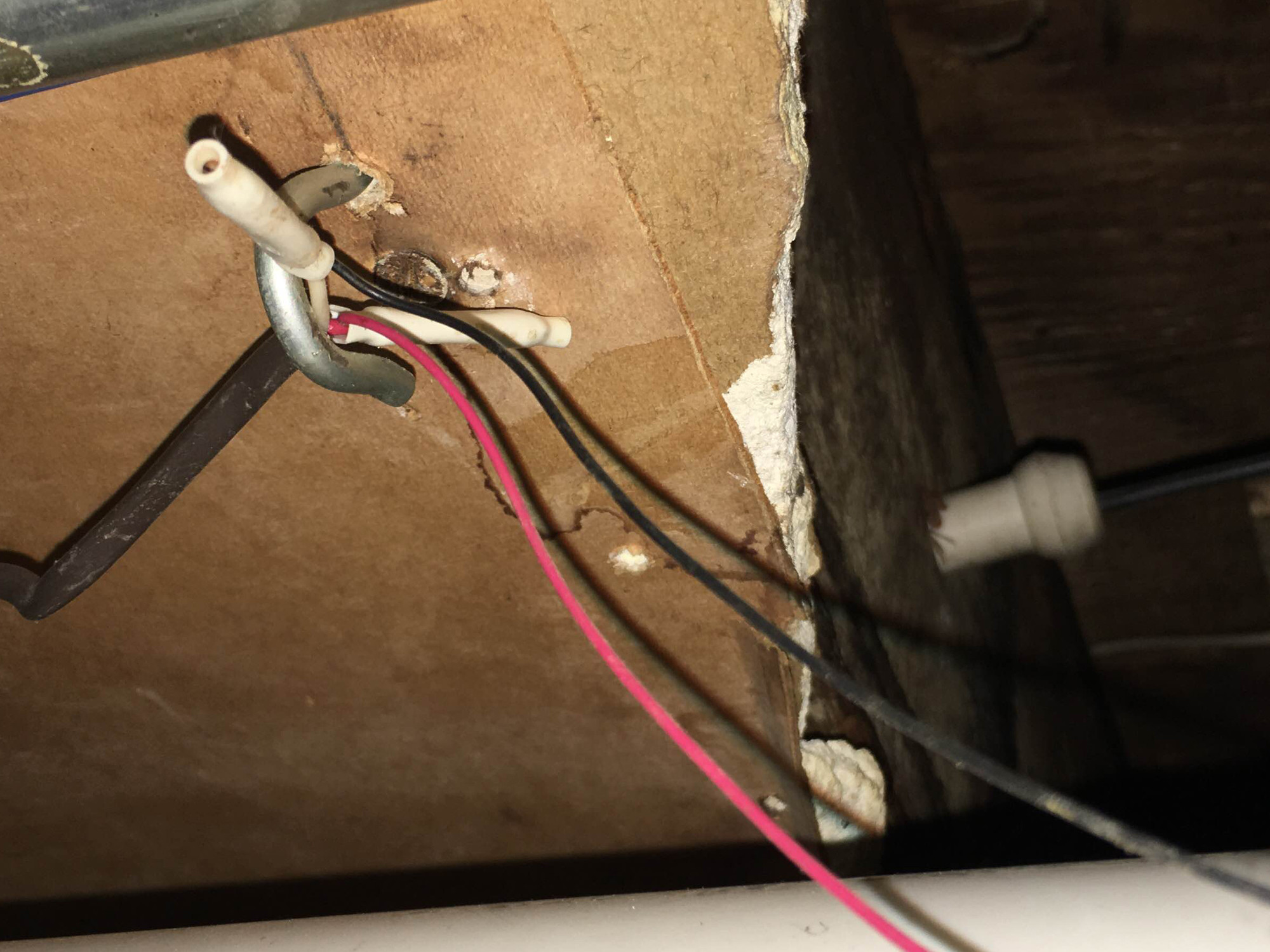The first photo shows home telephone wiring.
One of the cables is the two-conductor service wire from the phone company. It is most likely the black cable passing through the knob insulator, but it could be that very old cloth-insulated three-conductor cable caught between the subfloor boards. You may be able to trace it to where it comes into the house, and you can see if it continues on to a utility pole.
The remaining wires are all runs to various and sundry phone extensions throughout the house. The photo shows samples of every type of house internal phone wiring ever used from 1920 to 1990. Look around the house for phone jacks; you probably have samples of those spanning 70 years also.
The inspector didn't say anything because the wiring is completely safe, even it it's still connected to the phone company.
Depending on where you are, if you can find a suitable telephone to use, you may be able to make local emergency (e.g. 911) calls even if you are not a subscriber.
The second photo could be of anything.
If the inspector didn't go into cardiac arrest, it must be low voltage and therefore safe. It's most likely for your doorbell.


